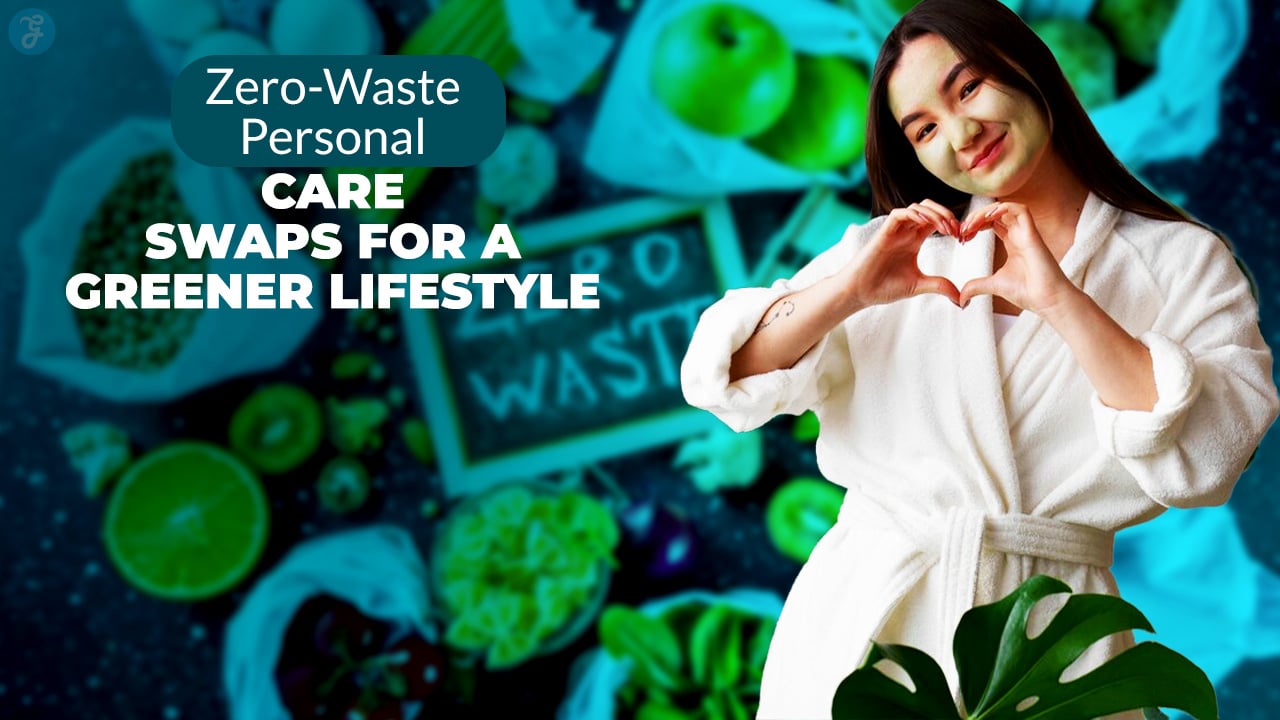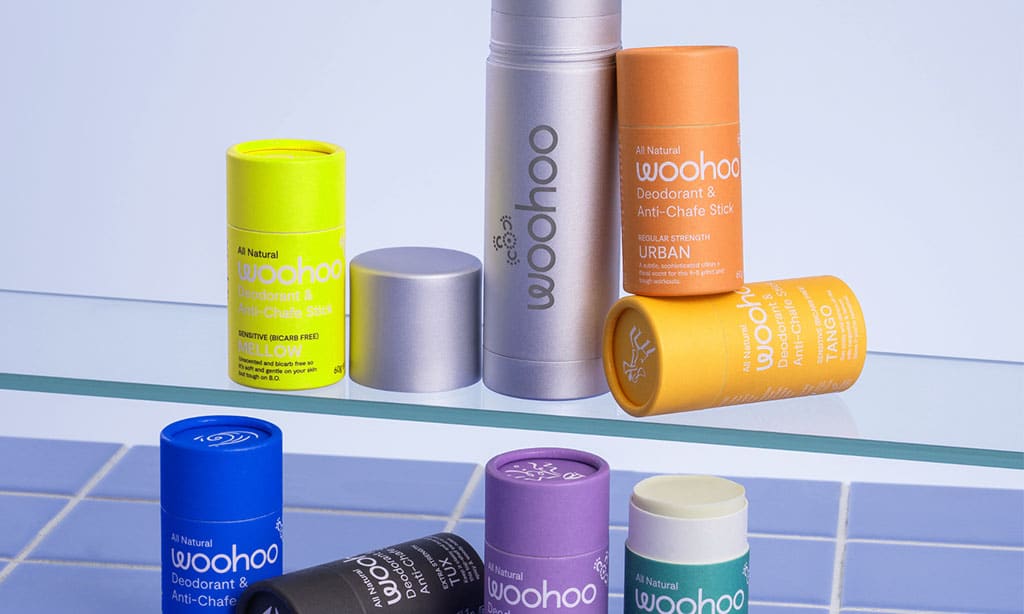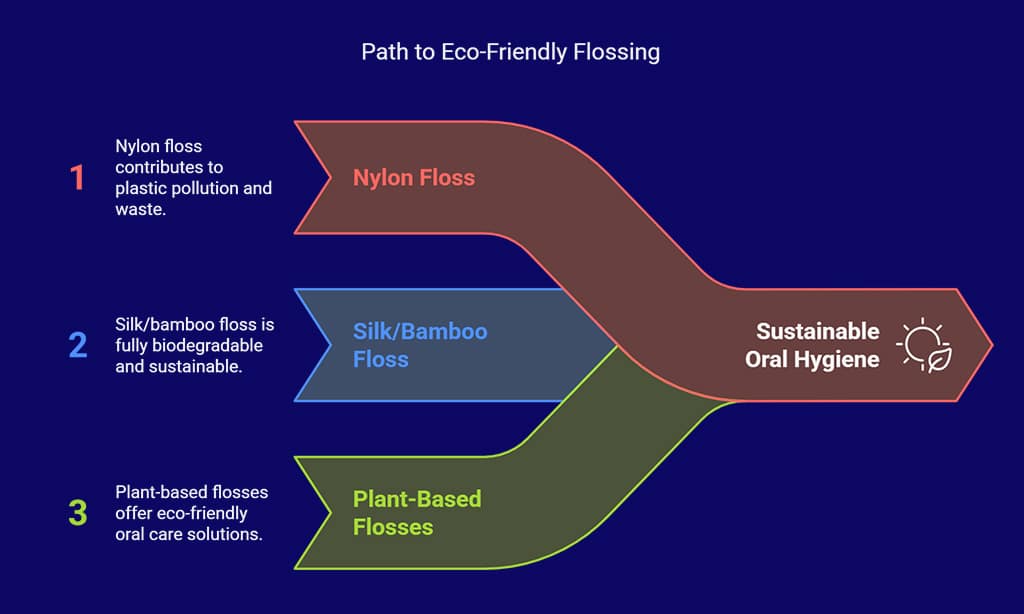In today’s world, where environmental consciousness is at an all-time high, adopting a zero-waste lifestyle is no longer just a trend—it’s a necessity. Traditional personal care products contribute significantly to plastic waste, chemical pollution, and resource depletion.
By making simple yet impactful zero-waste personal care swaps for a greener lifestyle, you can reduce your ecological footprint while enjoying high-quality, sustainable alternatives.
This article explores ten practical zero-waste personal care swaps for a greener lifestyle that will help you transition smoothly into sustainable living. Whether you’re a beginner or looking to refine your eco-friendly habits, these swaps will make a significant difference in both your daily routine and the planet’s health.
Why Zero-Waste Personal Care Matters
Traditional personal care products are often packaged in single-use plastics, which take hundreds of years to decompose. Additionally, many contain harmful chemicals that contaminate water sources and negatively impact marine life.
The global beauty industry alone generates 120 billion units of packaging waste annually, with the majority ending up in landfills or the ocean. Consumers are often unaware that everyday items like plastic toothbrushes and disposable razors contribute to long-term environmental damage.
Key Issues with Conventional Personal Care Items:
- Over 120 billion units of personal care packaging are produced annually.
- Most of these products contain microplastics and toxic ingredients.
- Disposable razors, toothbrushes, and hygiene products contribute to millions of tons of waste yearly.
Benefits of Zero-Waste Personal Care Swaps
Making the switch to zero-waste personal care products comes with multiple benefits:
- Reduces Plastic Waste: Sustainable packaging or no packaging at all.
- Healthier Alternatives: Free from parabens, sulfates, and artificial fragrances.
- Cost-Effective: Many reusable products last longer than their disposable counterparts.
- Minimal Environmental Impact: Biodegradable or compostable materials reduce landfill contributions.
10 Zero-Waste Personal Care Swaps for a Greener Lifestyle
Transitioning to a zero-waste personal care routine may seem daunting, but making small, mindful swaps can have a lasting impact on the environment. From daily essentials like toothbrushes and razors to beauty and hygiene products, there are numerous sustainable alternatives that not only reduce waste but also improve personal health. Below are ten easy yet effective zero-waste personal care swaps for a greener lifestyle.
Swap 1: Bamboo Toothbrush Instead of Plastic Toothbrush
Plastic toothbrushes contribute to billions of pounds of waste each year. Bamboo toothbrushes are an excellent alternative as they are biodegradable, compostable, and just as effective. With over 1 billion plastic toothbrushes thrown away annually in the U.S. alone, making the switch to bamboo can have a substantial impact.
Comparison Table:
| Feature | Plastic Toothbrush | Bamboo Toothbrush |
| Material | Plastic [Non-biodegradable] | Bamboo [Biodegradable] |
| Lifespan | 3-4 months | 3-4 months |
| Environmental Impact | Adds to landfill waste | Decomposes naturally |
Swap 2: Refillable Deodorant Over Disposable Sticks
Conventional deodorants come in plastic containers and contain harmful chemicals such as parabens, phthalates, and artificial fragrances, which can be absorbed by the skin and potentially disrupt hormonal balance.
Additionally, most deodorant packaging is non-recyclable, contributing to the over 15 million pounds of plastic deodorant waste generated each year. Refillable or DIY natural deodorants provide a more sustainable solution, reducing waste while offering safer, skin-friendly alternatives.
These products often come in compostable, recyclable, or reusable packaging, helping to lower your carbon footprint without compromising on freshness or effectiveness.
Comparison Table:
| Feature | Conventional Deodorants | Refillable/Natural Deodorants |
| Packaging | Plastic [non-recyclable] | Refillable, compostable, or metal tins |
| Ingredients | Synthetic chemicals, parabens | Natural, aluminum-free, skin-safe |
| Environmental Impact | High plastic waste | Low to zero waste |
| Cost Over Time | Frequent repurchasing | Cost-effective refills |
Key Benefits:
- Eliminates single-use plastic waste, reducing landfill contributions.
- Free from aluminum, artificial preservatives, and synthetic fragrances.
- Available in customizable scents and formulas to suit individual preferences.
- Long-lasting and cost-effective, with refillable or reusable container options.
Best Refillable Deodorant Brands:
- Myro [Plant-powered formula, refillable cases, wide scent range]
- Wild [Compostable refills, vegan-friendly, aluminum-free]
- Native [Plastic-free line, all-natural ingredients, effective odor control]
Swap 3: Bar Soap Over Liquid Body Wash
Liquid body wash often comes in plastic bottles, leading to millions of tons of plastic waste annually. These plastic containers contribute significantly to pollution, as most of them end up in landfills or the ocean. Additionally, liquid body washes are formulated with synthetic detergents, artificial fragrances, and preservatives that can strip the skin’s natural moisture and contribute to water pollution when rinsed down the drain.
Bar soaps, on the other hand, are an eco-friendly alternative that often come in biodegradable or compostable packaging. They last three times longer than liquid soaps, reducing both waste and the frequency of repurchases. Moreover, many natural bar soaps are made with organic oils and essential nutrients that nourish the skin without harmful chemicals.
Comparison Table:
| Feature | Liquid Body Wash | Bar Soap |
| Packaging | Plastic bottles | Paper, compostable, or no packaging |
| Chemical Content | Artificial fragrances, sulfates, preservatives | Natural oils, minimal ingredients |
| Lifespan | Used up quickly | Lasts 3x longer than liquid soap |
| Environmental Impact | High plastic waste, water pollution | Low waste, biodegradable |
Why Choose Bar Soap?
- Longer-lasting than liquid alternatives, reducing repurchases and waste.
- Requires less water during production, conserving natural resources.
- Free from synthetic preservatives and artificial ingredients, making them better for skin health.
- Often available in a variety of skin-nourishing formulas, such as shea butter, coconut oil, or aloe vera-based options.
Swap 4: Safety Razor Instead of Disposable Razors
Disposable razors are made of plastic and are non-recyclable, leading to significant waste accumulation. Most disposable razors are composed of mixed materials, including plastic handles and metal blades, making them difficult to recycle.
On average, a person using disposable razors discards approximately 20-40 razors per year, adding to the 2 billion disposable razors thrown away annually in the U.S. alone. In contrast, safety razors offer a sustainable alternative, with stainless steel blades that can be easily recycled and a handle designed to last a lifetime.
Comparison Table:
| Feature | Disposable Razors | Safety Razors |
| Material | Plastic, mixed metals | Stainless steel, durable metal |
| Lifespan | Single-use to a few weeks | Lifetime with blade replacements |
| Recyclability | Non-recyclable | Fully recyclable blades |
| Cost Over Time | Expensive due to frequent purchases | Cost-effective long-term |
| Shaving Quality | Can cause irritation and razor burns | Closer, smoother shave with fewer ingrown hairs |
Pros of Using a Safety Razor:
- One-time investment with long-term savings, reducing costs over time.
- Provides a closer shave with minimal irritation, ideal for sensitive skin.
- 100% recyclable materials, reducing landfill waste.
- Stylish and ergonomic designs that enhance the shaving experience.
- Compatible with high-quality shaving soaps, further minimizing plastic waste.
Swap 5: Shampoo and Conditioner Bars Over Bottled Products
Bottled shampoos contain chemicals such as sulfates, parabens, and synthetic fragrances that can strip natural oils from your hair, cause scalp irritation, and pollute waterways. Additionally, the beauty industry produces over 552 million plastic shampoo bottles annually, the majority of which end up in landfills or the ocean.
Shampoo and conditioner bars, on the other hand, offer a sustainable alternative with minimal packaging, reducing plastic waste while delivering nourishing ingredients that promote healthier hair.
Comparison Table:
| Feature | Bottled Shampoo & Conditioner | Shampoo & Conditioner Bars |
| Packaging | Plastic bottles | Minimal or compostable paper |
| Chemicals | Sulfates, parabens, artificial fragrances | Natural, plant-based ingredients |
| Water Content | High [80% water] | Low [concentrated formula] |
| Environmental Impact | High plastic waste and pollution | Zero waste, eco-friendly |
Benefits of Solid Haircare Bars:
- Travel-friendly and long-lasting, with one bar replacing 2-3 plastic bottles.
- Free from artificial sulfates, parabens, and preservatives.
- Uses less water in production and helps conserve natural resources.
- Compact and lightweight, making them ideal for travel and reducing carbon emissions in shipping.
- Available in various formulations to cater to different hair types, including dry, oily, and curly hair.
Swap 6: Reusable Cotton Rounds Instead of Disposable Cotton Pads
Disposable cotton pads contribute to deforestation and require massive amounts of water to produce. The production process involves intensive use of pesticides and chemicals that not only harm the environment but also affect human health.
Additionally, used cotton pads are often mixed with synthetic fibers, making them non-compostable and increasing landfill waste. In contrast, reusable cotton rounds provide a sustainable alternative, reducing waste while offering a softer and more cost-effective option for skincare routines. They can be washed and reused multiple times, making them an eco-friendly and budget-conscious choice.
Comparison Table:
| Feature | Disposable Cotton Pads | Reusable Cotton Rounds |
| Material | Cotton (often mixed with synthetic fibers) | Organic cotton, bamboo, or hemp |
| Environmental Impact | High water consumption, pesticide use | Sustainable, reduces waste |
| Lifespan | Single use | Multiple years (washable) |
| Cost Over Time | Expensive due to frequent purchases | Cost-effective in the long run |
Best Options:
- Bamboo cotton rounds [Soft, biodegradable, and highly absorbent]
- Hemp fiber facial pads [Durable, antimicrobial, and eco-friendly]
Swap 7: Biodegradable Floss Instead of Nylon Floss
Most dental floss is made of nylon, which is not biodegradable and can contribute to plastic pollution when discarded. Additionally, conventional floss often comes in plastic packaging, further adding to environmental waste.
Flossing is essential for oral health, but choosing a sustainable option can make a significant impact. Alternatives such as silk floss, bamboo charcoal floss, and plant-based flosses offer an eco-friendly way to maintain oral hygiene without harming the planet.
Comparison Table:
| Feature | Nylon Floss | Silk/Bamboo Floss |
| Biodegradability | Non-biodegradable | Fully biodegradable |
| Packaging | Plastic container | Glass or compostable material |
| Sustainability | Petroleum-based | Natural, renewable materials |
| Environmental Impact | High waste contribution | Low to zero waste |
Top Sustainable Floss Brands:
- Dental Lace [Refillable glass containers, silk-based floss]
- Etee Floss [Compostable packaging, candelilla wax coating]
- WooBamboo [Plant-based floss with biodegradable packaging]
Swap 8: Menstrual Cups or Reusable Pads Over Disposable Hygiene Products
Disposable menstrual products create massive waste, with over 12 billion pads and tampons ending up in landfills each year. In addition to their environmental impact, they contain synthetic materials and chemicals that can cause irritation and health concerns. Switching to menstrual cups or reusable pads significantly reduces waste while providing a more comfortable and economical alternative.
Menstrual cups, made from medical-grade silicone, can last up to 10 years, making them a one-time investment for many users. Similarly, reusable cloth pads, often crafted from organic cotton, provide a soft and chemical-free experience, reducing skin irritation compared to conventional options.
Comparison of Menstrual Products:
| Feature | Disposable Pads/Tampons | Menstrual Cup | Reusable Pads |
| Lifespan | Single use | 5-10 years | 3-5 years |
| Waste | High | Low | Low |
| Cost Over Time | Expensive | Cost-effective | Cost-effective |
| Comfort | Can cause irritation | Soft, flexible, and leak-proof | Breathable and gentle |
| Maintenance | Requires frequent purchases | Wash and reuse | Wash and reuse |
Popular Sustainable Menstrual Brands:
- DivaCup [Leading menstrual cup brand, long-lasting design]
- Lunette [Medical-grade silicone cups, eco-friendly production]
- GladRags [Organic cotton reusable pads, sustainable practices]
Swap 9: Glass or Aluminum Packaging for Skincare Products
Instead of buying skincare products in plastic containers, opt for brands that use glass or aluminum packaging, which are infinitely recyclable. Glass packaging helps preserve product quality without leaching harmful chemicals, while aluminum is lightweight and can be recycled indefinitely without degradation.
Many eco-conscious brands are now transitioning to zero-waste packaging solutions, offering refillable containers and compostable materials. By choosing such options, consumers contribute to reducing the 120 billion units of beauty packaging waste generated annually.
Comparison Table:
| Feature | Plastic Packaging | Glass/Aluminum Packaging |
| Recyclability | Low [often ends up in landfills] | High [infinitely recyclable] |
| Product Preservation | May leach chemicals | Preserves product integrity |
| Environmental Impact | High pollution and waste | Sustainable and reusable |
Sustainable Skincare Brands:
- Lush [Naked packaging line, solid products with no waste]
- Tata Harper [100% recyclable glass packaging, refillable options]
- Ethique [Solid beauty bars with compostable packaging]
Swap 10: Wooden or Metal Hairbrush Instead of Plastic Brushes
Plastic hairbrushes break easily, accumulate in landfills, and are non-recyclable due to the combination of plastic and synthetic materials used in their production. They also release microplastics over time, contributing to environmental pollution. Wooden or metal alternatives, on the other hand, are more durable, biodegradable, and made from sustainably sourced materials. Additionally, these eco-friendly alternatives offer better scalp stimulation, reduced static, and long-lasting performance.
Comparison Table:
| Feature | Plastic Hairbrush | Wooden/Metal Hairbrush |
| Durability | Breaks easily | Long-lasting |
| Sustainability | Non-recyclable | Biodegradable/Recyclable |
| Hair Benefits | Causes static and breakage | Reduces frizz, stimulates scalp |
| Eco-friendliness | Adds to landfill waste | Made from sustainable materials |
Best Options:
- Tek Wooden Brushes [Sustainably sourced wood, handcrafted design]
- Bass Brushes [Natural bamboo, soft bristles]
- Mason Pearson [Rubber and wood, designed for longevity and comfort]
Takeaways
By incorporating these ten zero-waste personal care swaps for a greener lifestyle, you contribute to a cleaner planet while also enjoying safer and healthier alternatives.
Small changes lead to a significant impact, and embracing sustainability in your personal care routine is a great way to start. What are your favorite zero-waste swaps? Share your thoughts in the comments below!













































